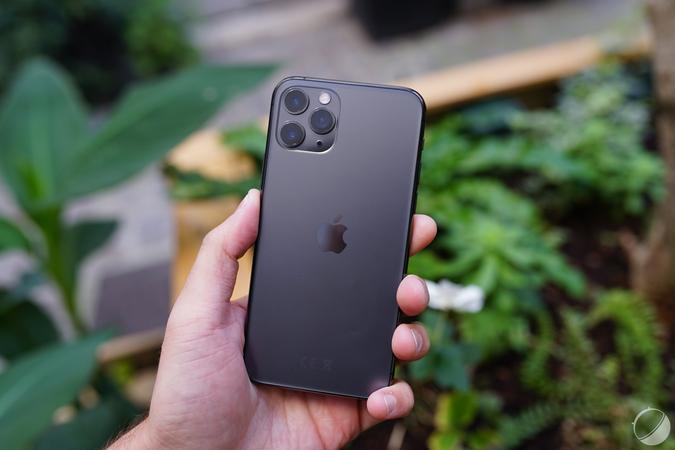The entry into the market of two flagship phones from the world's second and third largest smartphones has highlighted a new divide. Just when it seemed like the world of smartphones was converging towards a standard pattern of design, features, and functionality, the trade war between China and the United States created a new divide. We will see in this article the crucial importance that these two brands play in the respective economy of their country.
The battle of technology
On the one hand, Apple unveiled a new series of iPhones two weeks ago that will take full advantage of the latest version of its operating system, iOS, which is now in its 13th generation. On the other hand, Huawei launched its new flagship Mate 30 series last week, which has been heavily detached from the Android operating system. Much is said about Huawei's Harmony operating system, which has been in development for over five years. However, the fact that the United States bans Huawei from accessing American technology means that it still loses the enormous advantages of an operating system that has evolved over a decade thanks to the efforts of its owner, Google, and a global industry of Android phone makers.
This raises the key question for smartphones of 2020:
Can Huawei without Android still compete with the iPhone 11, as well as the Samsung S10 and Note 10 ranges, which are running at the forefront of Android evolution?
The answer depends not so much on the technology of the phones as on Huawei's ability to convince its relatively new army of users that this is more of a marketing strategy. That was the thrust of last week's launch. The Chinese company's big reveal wasn't so much the phone itself as the new role of HMS, or Huawei Mobile Services. It is a direct replacement for Google Mobile Services (GMS), which basically represents the Android ecosystem. The Play Store is an integral part of GMS.
Ironically, the HMS is also available for download from the Google Play Store. Currently, Huawei isn't allowed to add GMS to new phones, which means it can't pre-install the Google Play Store on its new phones either. apps – a scaled-down alternative to the Play Store, with 45,000 apps available -, Huawei ID, push notifications, payments, themes, mobile cloud, phone clone, and Huawei Health. However, the phone remains compatible with Android applications.

Its operating system is a version of Android based on the Android Open Source Project, which is not included in the US ban, as it is a global project, not owned by Google. This means users will be able to download apps from the Play Store, but will need to go through a few extra steps to do so.
The real loss is that of seamless integration with the store. Individual apps won't work without something called the Google Services Framework (GSF), which Huawei says he can't install on new devices. However, various websites offer advice on how to "steal" the framework from unauthorized sources, and thus get the Play Store to work. This means that neither Google nor Android guarantees the services and performance, and the user is responsible if something goes wrong. That said, Huawei has developed its own versions of most key apps.
Why go to so much trouble, and not just buy an Android phone from other brands?
The Samsung S10 and Note 10 phones are just as good as the new Apple devices, and beat them in many areas yet The answer is simple: the Mate 30 phones are probably the best value of current flagship phones, and the best cameras on the market. Huawei has taken the edge over its competition in cellphone photography with the P20 Pro, and isn't about to let it go.
The main rear camera is a tri-lens device comprising a 40MP 27mm wide-angle lens with an f/1.6 aperture, which means it has a wide image capture view and lets in as much light than other leading phone lenses, and an 8MP 125mm telephoto lens, and a 20MP 16mm ultra-wide lens. It incorporates a 3D camera, Leica optics, dual LED flash and HDR system. Video with 2160p – i.e. high resolution – running at 30 frames per second, and ultra slow at 720p running at 960 frames per second. By comparison, the Apple iPhone 11 Pro Max also offers a triple-lens camera, but with a 26mm wide-angle lens, a 52mm telephoto lens, and a 13mm ultra-wide lens. This suggests that Apple is still behind Huawei when it comes to camera technology, and needs to look into software settings to match image quality. Huawei also outdoes itself with the Mate 30 Pro's selfie camera, which reaches 30MP compared to 12MP for the iPhone 11 Pro.
The main difference is that Apple is integrating 3D functionality into the selfie lens, along with higher resolution and more options for video speed. Both devices have around 6.5-inch screens and large batteries – 3696mAh on the iPhone and 4200mAh on the Mate 30. However, the iPhone starts at 4GB of RAM, while the Mate starts at 6GB, which suggests faster performance – all things being equal, which isn't necessarily the case. It is almost certain that the iOS 13 operating system of the iPhone will be better integrated and run more smoothly, especially when the Google software is installed on the Mate.
The choice isn't obvious, but it's highly likely that the cutting-edge device will convince a hard core of users enough to stick with Huawei to keep the brand at the forefront of the smartphone market. But that may not be enough to prevent Apple from regaining its second place in the global market. To be continued…
Share this article :